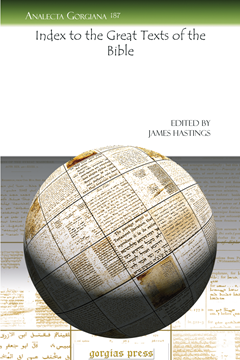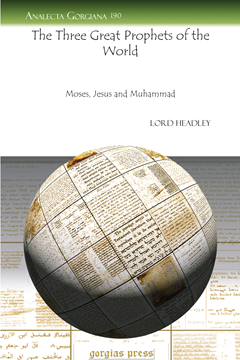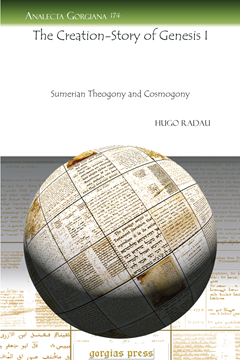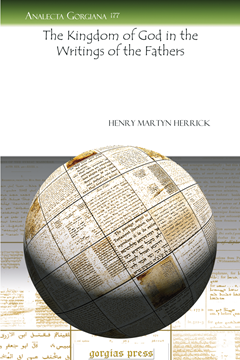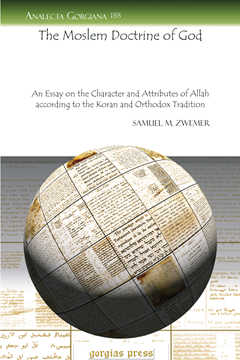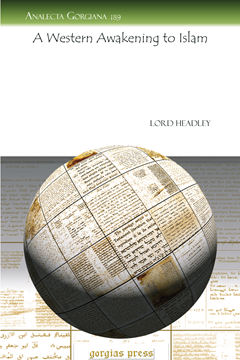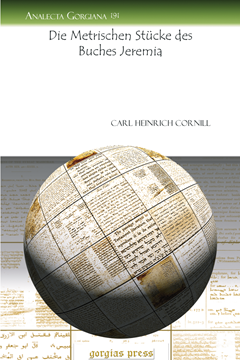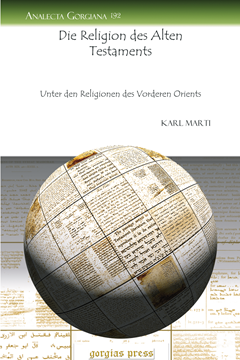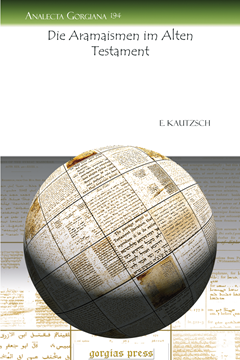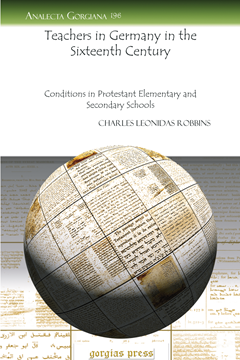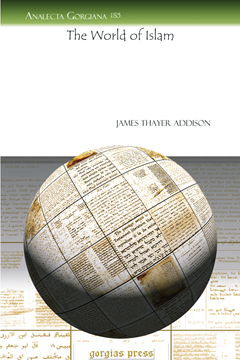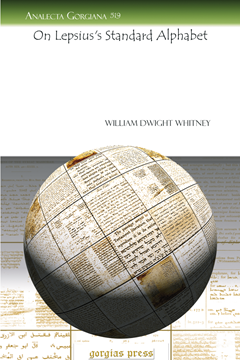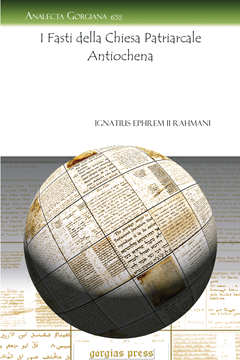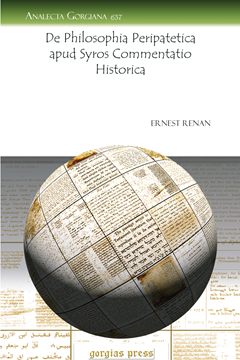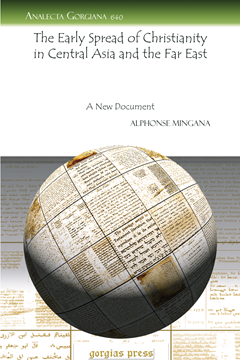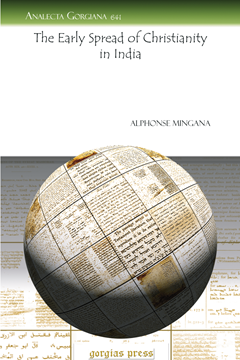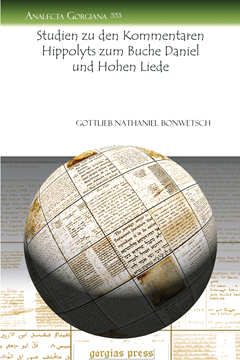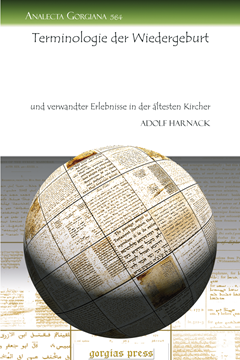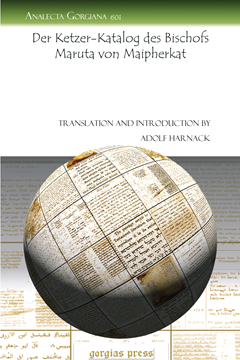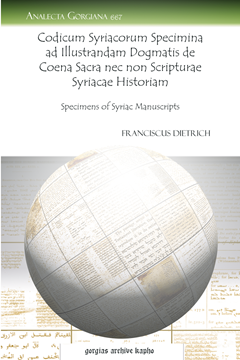Analecta Gorgiana
Analecta Gorgiana is a collection of long essays and short monographs which are consistently cited by modern scholars but previously difficult to find because of their original appearance in obscure publications. Carefully selected by a team of scholars based on their relevance to modern scholarship, these essays can now be fully utilized by scholars and proudly owned by libraries.
Index to the Great Texts of the Bible
Edited by James Hastings
Series: Analecta Gorgiana 187
ISBN: 978-1-60724-283-3
Hasting’s Great Texts of the Bible was a massive, twenty volume set of Bible Studies. Under each biblical book comments were added to the lections in order to provide homiletical support. Conscientious about the difficulty of locating material in a resource of about 10,000 pages, Hastings had an index prepared. Knowing that clergy and biblical scholars tend to seek subjects for study, the index was prepared as an alphabetical index rather than a simple scriptural one. Such a resource retains its value for those who continue to use the extensive commentary that Hastings edited. This little index will be helpful to anyone following in Hasting’s impressive footsteps.
$49.00 (USD) $29.40 (USD)
The Three Great Prophets of the World
Moses, Jesus and Muhammad
By Lord Headley
Series: Analecta Gorgiana 190
ISBN: 978-1-60724-286-4
Written by a well-known convert to Islam, this little study traces the connections between the major prophets of each of the monotheistic faiths. Moses, Jesus, and Muhammad. He discusses the moral influences of these founders on their followers and the impact they had on their world. Headley next considers the way that these founders died or left the world and also what they had taught about the next world. Special attention is given, naturally, to the advent of Islam and what happened after the founding of the faith. Headley ends with a brief sketch of the life of Muhammad. A compact study written from the Islamic point of view, this book will be of interest to anyone concerned with the relations between the three monotheistic religions.
$57.00 (USD) $34.20 (USD)
Arabian Wisdom
Series: Analecta Gorgiana 195
ISBN: 978-1-60724-295-6
Having lived for many years in Beirut, John Wortabet grew to know much about the Islamic world. Recognizing the wisdom and integrity of the people and religion of what was then known as Syria, Wortabet set about to preserve the essentials of Arabic wisdom in this little book. The wisdom saying, a literary form of ancient pedigree in this part of the world, is generally a brief but pointed statement of a truth distilled from careful observation. Wortabet here presents these saying arranged according to topic, with the goal of facilitating understanding between the wider world and those who live in what has become a very unsettled region.
$47.00 (USD) $28.20 (USD)
The Creation-Story of Genesis I
Sumerian Theogony and Cosmogony
By Hugo Radau
Series: Analecta Gorgiana 174
ISBN: 978-1-60724-245-1
In this brief study of the creation account in Genesis 1, Radau makes full use of the Sumerian materials available in his day. Summarizing the sea monster versus deity scenario known from the Enuma Elish’s account of Marduk against Tiamat, he shows how Yahweh fits this role in Genesis 1. Going into linguistic detail of the Hebrew and Sumerian sources, he draws a set of correlations between the two.
$47.00 (USD) $28.20 (USD)
The Kingdom of God in the Writings of the Fathers
Series: Analecta Gorgiana 177
ISBN: 978-1-60724-269-7
Exploring the concept of the kingdom of God, this thesis is based on Patristic sources from the time of Clement of Rome to that of John of Damascus. Herrick begins with the Apostolic Fathers to set the stage for the major divisions that follow. Divided into the Ante-Nicene Fathers and the Nicene and Post-Nicene Fathers, the sources are divided into the Greek and Latin traditions and the major theologians and historic sources are examined for what they indicate about the theme. Written in non-technical language, this volume is readable by laity and specialists alike.
$58.00 (USD) $34.80 (USD)
The Moslem Doctrine of God
An Essay on the Character and Attributes of Allah according to the Koran and Orthodox Tradition
Series: Analecta Gorgiana 188
ISBN: 978-1-60724-284-0
In his zeal to convert Muslims to Christianity, Zwemer was unmatched and this book helps to explain why. Not shy about admitting that the three major monotheistic religions share the concept of one God, he begins an examination of Islamic ideas about God, from a Christian perspective. Starting with the premise of the singularity of Allah, Zwemer discusses the Muslim ideas of the divine essence. In a chapter about the ninety-nine names of Allah he explores the similarity to the rosary and Islamic ideas of divine justice. Passing next to the attributes of Allah, Zwemer examines and analyzes what Muslims assert regarding God. In further chapters he deals with how Allah interacts with the world, the concept of the Trinity, and predestination. Determining that the completed idea of God in Islam is incomplete, Zwemer concludes with a case for the God of Christianity.
$59.00 (USD) $35.40 (USD)
A Western Awakening to Islam
By Lord Headley
Series: Analecta Gorgiana 189
ISBN: 978-1-60724-285-7
Wishing to educate the western world to the wonders of Islam, Lord Headley penned several books on the religion. In the present volume he volunteers the various attributes that made Islam a viable option for a western citizen. Understanding the religion would ultimately undermine fears others felt toward the unfamiliar faith. Taking traditional areas of concern to task, he addresses peacefulness, women’s place in Islam, willful misrepresentations, self-control, fear, law and order, converts, praise and thanksgiving, and the continuation of God’s blessings. Such a strong case suggested to his readers that society’s fears stemmed from misunderstanding.
$65.00 (USD) $39.00 (USD)
Die Metrischen Stücke des Buches Jeremia
Series: Analecta Gorgiana 191
ISBN: 978-1-60724-287-1
This brief study entails a reconstruction of the metrical pieces of the book of the prophet Jeremiah. Laid out in poetic stanzas, various sections of this noteworthy prophetic book are presented in a form intended to facilitate analysis. Segments of several chapters are included, scanned according to the analytical parameters of Cornill. Noting that Jeremiah differs from the other major prophets Isaiah and Ezekiel in the reduced amount of poetry, Cornill nevertheless seeks a metrical pattern in the work of the prophet and lays it out in the original Hebrew. An informative foreword explains the method and layout choices used. Students of Hebrew metrics or ancient poetry in general will find these insights useful.
$43.00 (USD) $25.80 (USD)
Die Religion des Alten Testaments
Unter den Religionen des Vorderen Orients
By Karl Marti
Series: Analecta Gorgiana 192
ISBN: 978-1-60724-288-8
The aim of this booklet is to given an account of the nature of the religion of the Old Testament, especially those aspects that differentiate it from other ancient religions. Fitting with the emerging historical-critical Zeitgeist, Marti follows the usual division of Israelite religion into nomadic, peasant, prophetic, and legal religions. Various accoutrements and components of the religious life of antiquity are considered throughout this somewhat contrived course of Israel’s religious development. Written when Assyriology was just beginning to come into its own, Marti still finds the Graf-Wellhausen hypothesis a compelling explanation for the form of the biblical material.
$52.00 (USD) $31.20 (USD)
Beiträge zur Semitischen Metrik
Series: Analecta Gorgiana 193
ISBN: 978-1-60724-289-5
This brief contribution to the discussion of Semitic metrics was written by a renowned scholar of biblical languages. Concentrating on the partial acrostic poem in Nahum 1.2-2.3, Bickell addresses the metrics of the piece. Laying out the text in Hebrew and in transliteration, Bickell gives his own translation along with his metrical observations. For anyone interested in the poetic structures of Semitic languages, particularly biblical Hebrew, this booklet will provide considerable insight.
$33.00 (USD) $19.80 (USD)
Die Aramaismen im Alten Testament
By E. Kautzsch
Series: Analecta Gorgiana 194
ISBN: 978-1-60724-290-1
In this essential contribution to the study of Aramaisms in the Bible, noted linguist E. Kautzsch provides a thorough introduction to the subject. Since Aramaisms are not overly abundant in the Bible, Kautzsch has the space to dedicate a significant analysis. For linguists interested in how Aramaic influenced biblical Hebrew, as understood at the turn of the twentieth century, this little book will be of great value.
$58.00 (USD) $34.80 (USD)
Teachers in Germany in the Sixteenth Century
Conditions in Protestant Elementary and Secondary Schools
Series: Analecta Gorgiana 196
ISBN: 978-1-60724-297-0
Known as an author of education books, Robbins first wrote this piece as a dissertation at Teachers College, Columbia University. An historical expedition into the role of teachers in sixteenth-century Germany, Robbins muses over the conditions in the Protestant elementary and secondary schools of the past. Outlining the sources available, Robbins lists the kinds of teachers and their number. The character and training of teachers, as well as their appointment and tenure at the end of the Medieval Period are given considerable attention. Their economic conditions and professional and social relationships are examined in the context of their attitude towards their profession. This brief study will be of interest to any who wish to know about the history of the craft of teaching in Europe.
$60.00 (USD) $36.00 (USD)
Christ in Islam
By James Robson
Series: Analecta Gorgiana 197
ISBN: 978-1-60724-299-4
A sympathetic account of how Islam has historically viewed Jesus, this little book sets out to present material from the Quran and other major sources that directly reference Jesus. Passages are presented in the order that they occur rather than being arranged in any artificial, chronological order. Selections from Thalabi’s Stories of the Prophets and one passage from Abu al Fida’s Universal History are included as well.
$61.00 (USD) $36.60 (USD)
The World of Islam
Series: Analecta Gorgiana 185
ISBN: 978-1-60724-281-9
This pamphlet is designed to help guide Churchmen and women in their reading on the Muslim world. At a time when, as Addison pointed out, Islam was throwing off the inertia of centuries and actively seeking to adopt the ways of the West, it was especially necessary to understand the beginnings, developments, and trends in that faith. Addison, who was one of the leading students of Islam in the Episcopal Church of his day, wrote this brief essay and appended it to descriptions of a few well selected books intended to give readers an understanding of the world of Islam.
$33.00 (USD) $19.80 (USD)
On Lepsius's Standard Alphabet
Series: Analecta Gorgiana 519
ISBN: 978-1-61719-034-6
Professor Lepsiuis’ created the standard alphabet for reducing unwritten languages and foreign graphic systems to a uniform orthography in European letters. The validity and strength of this alphabet is tested by Whitney and the American Oriental Society.
$38.00 (USD) $22.80 (USD)
I Fasti della Chiesa Patriarcale Antiochena
Series: Analecta Gorgiana 632
ISBN: 978-1-61719-581-5
In this work, Rahmani gives a survey of the Church at Antioch and its relationship to other churches, especially the Roman, and publishes (with Latin translation) a number of unedited texts (all Syriac, except one in Arabic).
$47.00 (USD) $28.20 (USD)
De Philosophia Peripatetica apud Syros Commentatio Historica
By Ernest Renan
Series: Analecta Gorgiana 637
ISBN: 978-1-61719-586-0
Renan (1823-1892) here gives a study of Aristotelian philosophy among both east Syriac and west Syriac schools at different times and in different centers, including Syriac texts as paving the way for the Arabic reception of Greek philosophy.
$49.00 (USD) $29.40 (USD)
The Early Spread of Christianity in Central Asia and the Far East
A New Document
Series: Analecta Gorgiana 640
ISBN: 978-1-61719-589-1
The main goal of this study is to present data from Syriac and Christian Arabic writers, and some other sources, dealing with missionary activity and the expansion of Christianity into east Asia.
$49.00 (USD) $29.40 (USD)
The Early Spread of Christianity in India
Series: Analecta Gorgiana 641
ISBN: 978-1-61719-590-7
Mingana here looks at the early history of Christianity in India, with references to most (if not all) of the passages in Syriac and Christian Arabic literature, as well as other documentary evidence, pertaining to the subject.
$50.00 (USD) $30.00 (USD)
Tattuva-Kaṭṭaḷei, Law of the Tattuvam
A Synopsis of the Mystical Philosophy of the Hindûs
Series: Analecta Gorgiana 598
ISBN: 978-1-61719-550-1
This article is a close translation, with explanatory notes, of the treatise Tattuva-Kattalei, the law of things according to their essential nature. This treatise was probably designed as a guide or manual for the Guru.
$37.00 (USD) $22.20 (USD)
The Religion of the Achaemenian Kings
First Series. The Religion According to the Inscriptions
Series: Analecta Gorgiana 599
ISBN: 978-1-61719-551-8
The author sets out to uncover more about the religion of the Achaemenian Kings and the Zoroastrian religion through many different kinds of ancient inscriptions and texts, both Persian and non-Persian.
$36.00 (USD) $21.60 (USD)
Studien zu den Kommentaren Hippolyts zum Buche Daniel und Hohen Liede
Series: Analecta Gorgiana 553
ISBN: 978-1-61719-274-6
The doctrine and origin of two of the commentaries of Hippolytus of Rome, whose troubled career has left him with the reputation of both Saint and Antipope
$51.00 (USD) $30.60 (USD)
Terminologie der Wiedergeburt
und verwandter Erlebnisse in der ältesten Kircher
Series: Analecta Gorgiana 564
ISBN: 978-1-61719-341-5
As part of his work on Origen, Adolf Harnack covers the Greek patristic terms for rebirth and related concepts.
$41.00 (USD) $24.60 (USD)
Der Ketzer-Katalog des Bischofs Maruta von Maipherkat
Translation and Introduction by Adolf Harnack
Series: Analecta Gorgiana 601
ISBN: 978-1-61719-432-0
This short catalogue lists the heresies known on the Syrian frontier of the Roman Empire in the beginning of the fifth century.
$34.00 (USD) $20.40 (USD)
Codicum Syriacorum Specimina ad Illustrandam Dogmatis de Coena Sacra nec non Scripturae Syriacae His
Specimens of Syriac Manuscripts
Series: Analecta Gorgiana 667
ISBN: 978-1-61719-617-1
This unique volume has a discussion of the lives of the Fathers extant in Syriac texts then at the British Museum. Plates reproduce a number of fragments of these manuscripts, together with Dietrich’s descriptions.
$40.00 (USD) $24.00 (USD)

